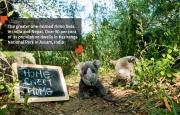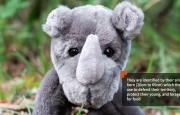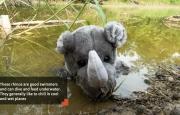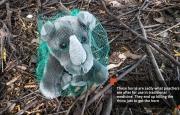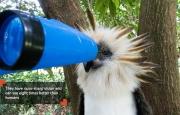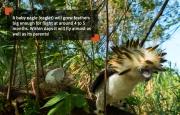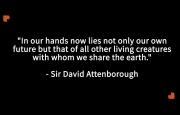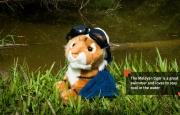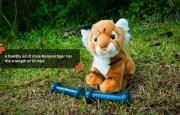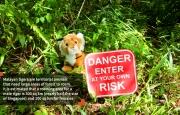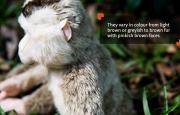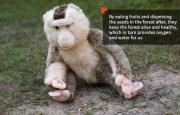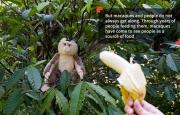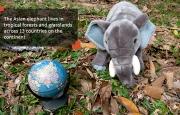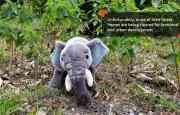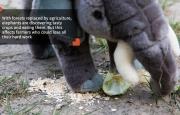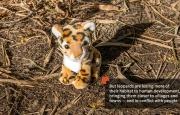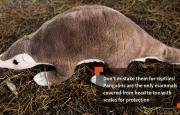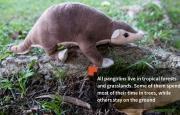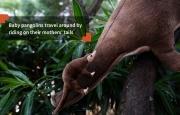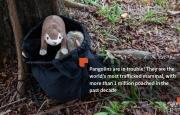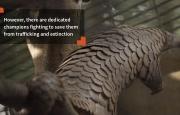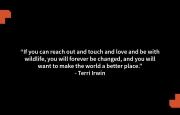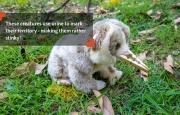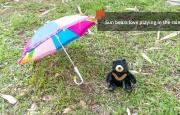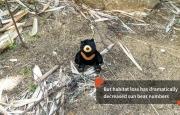 No time to read? Here’s a 30sec read
No time to read? Here’s a 30sec read
At Manas National Park, an UNESCO World Heritage Site, an insurgency in the 1990s forced locals who were suffering from a lack of livelihoods, to turn to poaching. Wildlife numbers drastically declined, especially the Greater One-horned Rhino. Eventually there were none left. A student-led movement rose up from within the local indigenous Boro community, forming the Manas Maozigendri Ecotourism Society (MMES) in 2003. An initiative which brings the land and its wildlife back from the brink. MMES embarked on a journey of restoration, galvanising the local community to convince poachers to stop, as well as reintroducing the locally extinct Great One-horned Rhino back into Manas. Their success in turning poachers into patrol guards and having rhinos walk the lands of Manas once again has allowed MMES to develop ecotourism as a source of sustainable livelihood for the Boro community. MMES’s blueprint for community conservation is a positive model on how wildlife conservation efforts can benefit both wildlife and people.
Poachers to protectors: The Manas success story
Sightings of the Greater One-horned Rhino always create a buzz among the local indigenous Boro people, as villagers gather to catch a glimpse of one of Manas National Park's most iconic species.
For Kalicharan Basumatary, a member of the Boro community, the presence of rhinos is the culmination of bringing back what was thought to be lost forever.
"The villages on the fringes of Manas National Park mostly consist of the Boro community. Animals, including rhinos, used to come into the village sometimes, even walk past my house”, says Kalicharan.
"In the 1990's, big animals like elephants, rhino and tigers were being poached. In 2002, we heard the last information about rhino poaching. After that, we heard nothing. There was nothing in our Manas National Park. Rhinos were completely gone.”
Manas in Peril
In the 1990s, fighting broke out in Assam. There were calls for a separate state to be created which led to an armed struggle. A time when the Boro people, who were desperately looking for ways to sustain themselves, turned to hunting the native wildlife.
"A lot of outsiders were coming with trucks full of logs. They gave a little money to economically-disadvantaged people who didn’t know better, to convince them to hunt wild animals such as elephants, rhinos and tigers, and cut down big trees for timber," Kalicharan recounts.
Budhiswar Boro, an ex-poacher, bears witness to the carnage.
"We could predict what kind of animal can be found in which area. I killed wild boar and then other animals like deer, tiger, bear, bison etc. because there was nobody to stop us from such activities."
The Greater One-horned Rhino population bore the brunt of this terror as all of them disappeared, with the last known sighting reported in 2002.
Career Change
Seeing the harm that was being done to the wildlife, members of the All Bodo Students' Union (ABSU) decided to take action. They realised that in order to create change that was sustainable and impactful for both wildlife and the people, they had to centre their efforts around the community. So in 2003, they formed the Manas Maozigendri Ecotourism Society (MMES), an initiative that focused on getting the community invested and involved in the conservation of the land and its wildlife. The first order of business - stop the poaching.
As members of the Boro community, student leaders like Kalicharan were aware of who the poachers were in their respective villages. "We prepared a list of people who manufactured homemade guns and who were using guns for hunting. We issued them letters and invited them to the ABSU office to persuade them to lay down their arms."
"The student leaders shared how valuable the forest is to us in preserving the atmosphere, providing good crop yields, and protecting our health,'' Budhiswar recalls. "Many wild animal species here cannot be found elsewhere on the planet, and could attract tourists.”
Initially only a few agreed to stop poaching. More meetings were organised with varying degrees of success. Prompting MMES to try other methods.
“We went house to house and talked to them in front of their wives and children to motivate them. We asked them if their family supported their hunting. Their wives and siblings wouldn't. Even their children did not support their poaching activities. When their families also started supporting us, they eventually relented.”
The ex-poachers were persuaded to use their knowledge to become patrol guards instead, to keep out other poachers and dismantle hideouts and traps that they come across, earning some money for their efforts. The sum was small, but significant during a time where many people were struggling to make a living.
For some poachers who feared for their livelihoods, a more persuasive approach was needed.
"We took them to other national parks like Kaziranga, Nameri and Orang to motivate them and show them how they're doing now, says Kalicharan. "We showed that the villages are earning through ecotourism now. After seeing this they were satisfied."
As for those who continued to resist, their guns were confiscated with the help of border guards and the Indian military.
Sharing Manas with the World
Stopping the poaching was just the first step to change. MMES also focused on building up the capacity and infrastructure for ecotourism which would provide economic support for the community. It has helped train villagers as safari guides, drivers and homestay owners. Boro weaving and silk workshops, which are run by local self-help groups, are also part of the unique experience that eco-tourists sign up for.
Kalicharan says, “If we conserve, there will be an increase in the number of animals and people will come to see them. So with tourists coming in, there will be income generation and job opportunities in the ecotourism industry.”
Thanks to collaborations with other local and international NGOs, the Greater One-horned Rhino was also reintroduced to Manas. “They had brought in 30 or so rhinos from outside. The responsibility for protection was put on the Manas Maozigendri Ecotourism Society. The number of rhinos has increased. Now there are 48 here,” beams Kalicharan.
The Power of Community Conservation
MMES’s conservation achievements have been recognised as a model that can be replicated in other places, and Kalicharan is proud of the critical role that the community played.
“Local people's involvement is very important in conservation. MMES's conservation initiative is based on involving local communities and that's why Manas's conservation history is a success.”
“Rhino is Manas's pride. At one time, they were all gone but now they're back. Manas's former glory has been restored. We feel very proud that we have been able to successfully revive it. Our children should have better lives than ours. All this will be possible if we conserve Manas.”
About Manas Maozigendri Ecotourism Society
Manas Maozigendri Ecotourism Society (MMES) is a community based wildlife conservation NGO at Manas National Park in Assam, India. Established in 2003, to counter the poaching that had ravaged their wildlife, MMES has not just turned ex-poachers into protectors, they have also established a sustainable and renowned eco-tourism model that has brought positive impact to the local indigenous Boro community as well as Manas’s resident wildlife like the Greater One-horned Rhino.
Contributors
Writer & Executive Producer
Producer
Lilian Tan & Aditi Sharma
Sound
Lalman Lalman
Editor & Colourist
Saugat Paul
Camera
Nitin Kumar
Director
Gautam Pandey
Please rotate your device to continue the slideshow
Creature Feature
Click on the animal icons to get to know our wildlife stars better!
Creature Feature
Tap on the animal icons to get to know our wildlife stars better!









